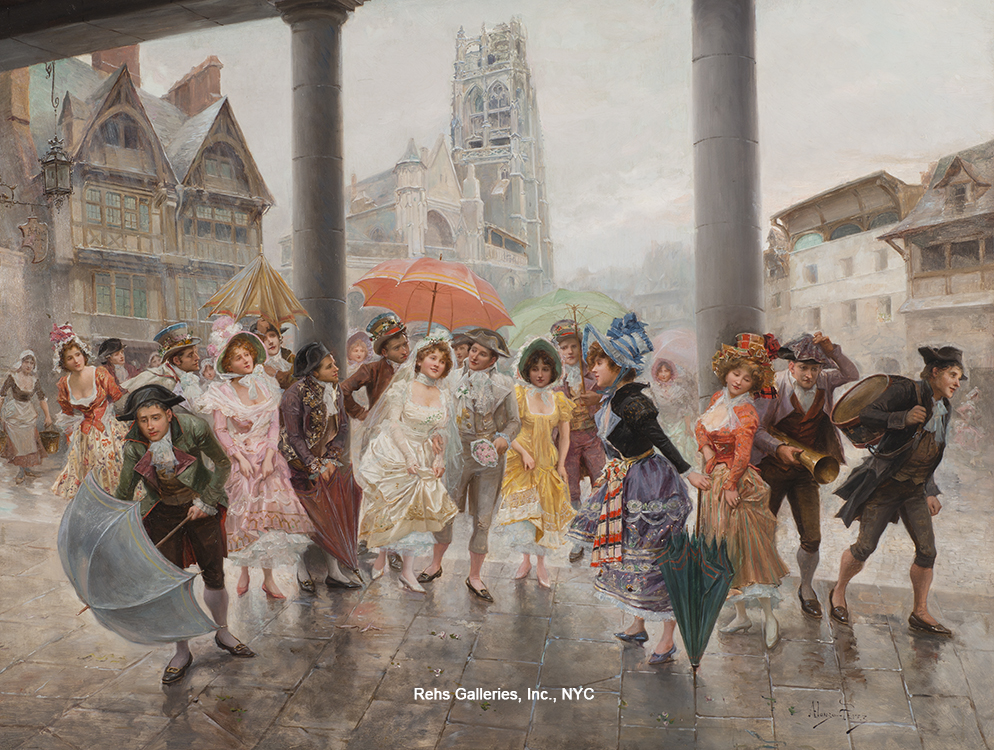Source: La Noce - this large work by the 19th century Spanish artist Alonso-Perez (1881-1914) made its way to a new home before the end of the year.
Alonso-Pérez was born into a family of artists in 1881 in Saragossa, a city with a richly diverse history. Little is known of Pérez’s early education except that his father, Mariano, was also a painter and presumably provided his son with instruction in the arts. The lure of Paris—and its growing number of private galleries—proved to be an important outlet for the Pérez family.
Alonso-Pérez is known to have been living in Paris in 1901, although it is entirely possible that he had arrived much earlier. He may have begun exhibiting his work as a young teenager, so it is not surprising to find him participating in the Paris Salon in 1901 at age twenty. The record of the Société des artistes françaises exposition annuelle des beaux-arts provides documentation that Alonso Pérez’s painting Bonne Farce was included in the exhibition. The entry also notes that he was born in Saragossa, and was currently living with M. Duval at rue du Faubourg-Saint-Martin 78 in the 10th arrondissement of Paris.
Artistically, Alonso-Pérez followed in his father’s footsteps by painting light-hearted genre scenes that were loosely based on eighteenth-century models. Many of these depict flirtatious encounters, such as The Billiard Lesson, which are reminiscent of the rococo themes of François Boucher, or alternately, the daily activities such as Going to the Market, which echo the focus on bourgeois life espoused by painters like Jean-Baptiste Greuze in the 1770s.
Pérez’s artistic production also includes designs for woven silk tapestries for Neyret Frères et Cie of St. Etienne in the Rhone Valley region. In addition to tapestry designs, Pérez also created lithographs such as the Bal époque Louis XV now in the Louvre’s collection, and prints for publication in a variety of art journals. No doubt this work was a means of providing basic income for a young artist. The most notable of these publications were in German, suggesting that Pérez was wisely expanding his geographic horizons in an increasingly international art market.
Little is known about Alonso-Pérez’s last decade. He does not seem to have exhibited at the Paris Salon after 1901, and there is no documentation of his print work in later publications. He died in 1914 at age 33.

